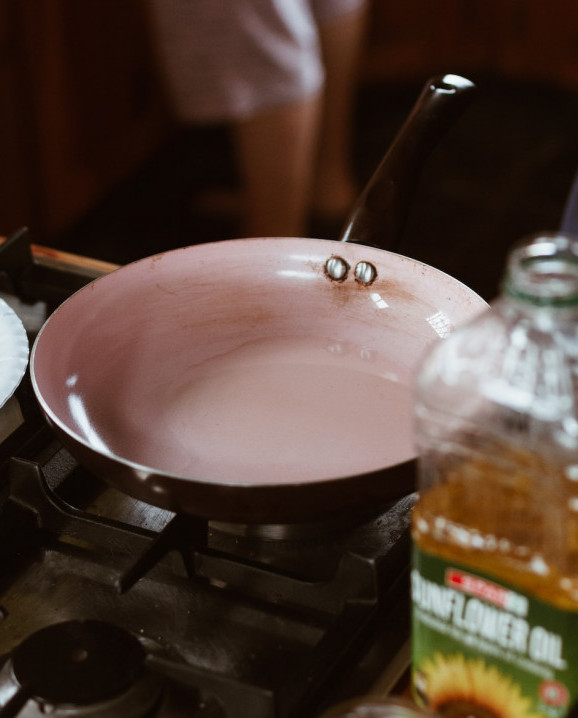
I think we all have our favorite pots and pans. I personally love the non-stick type. But did you know that some particles get into you the food you are cooking? Well I was totally shocked when this Headline pooped up on my computer.
Millions Of Teflon Particles Are Mixed With Your Food While Cooking On Teflon-Coated Pan!
There is a shocking revelation by scientists who are studying the surface of a Teflon-coated pan. The scientists that are studying state thousands to millions of ultra-small Teflon plastic particles may be released during cooking as non-stick pots and pans gradually lose their coating. I FIND THIS NEWS VERY SCARY
ACCORDING TO A new study published in the journal Science of the Total Environment, just a single small crack on the surface of a Teflon-coated pan can release about 9,100 plastic particles.i NEVER THOUGHT ABOUT THIS BEFORE. THIS IS TOTALLY UNACCEPTABLE.
Scientitsts have seen how millions of tiny plastic particles potentially come off during the cooking and washing of such non-stick pans and pots.
Indicating an increased risk of exposure to these chemicals during cooking, the release of 2.3 million micro plastics and nano plastics from broken coating was identified.
Teflon is the brand name of the chemical polytetrafluoroethylene – a synthetic polymer containing just carbon and fluorine that is one of the most well-known and widely used forever chemicals.
The reason behind being called as forever chemicals, is the fact that these chemicals are not broken down easily in the environment and remain a persistent problem for several generations. Why oh why would a manufacturer use this stuff?
These Teflon micro particles in our food might be a health concern, [which] needs investigating because we don’t know much about these emerging contaminants.
“We estimate that thousands to millions of Teflon micro plastics and nano plastics might be released during a mimic cooking process,” scientists wrote in the study. Needs to be further studied.
According to the Teflon Website it states:Worry About What to Make for Dinner—Not What You’re Using to Cook It
For more than 50 years, Teflon™ nonstick coatings have been used in cookware and bake ware. We put all our products through a rigorous testing process during each step of the supply chain to make sure you’re getting the safest, most durable products that carry the Teflon™ brand name.
To keep you nonstick coatings performing well:
- Avoid preheating nonstick pans on high heat without food in them—always start at a lower temperature using a fat like oil or butter or with the food already included. Empty pots and pans reach high temperatures very quickly, and when heated accidentally over 348 °C (660 °F) the coating can begin to deteriorate. Butter, fats, and cooking oils begin smoking at 204 °C (400 °F).
- Do not use nonstick cookware and bake ware in ovens hotter than 260 °C (500 °F). Higher temperatures can discolor the surface of coating or cause it to lose some of its nonstick properties.
I think for safety sake I’m ordering stainless steel pans.
